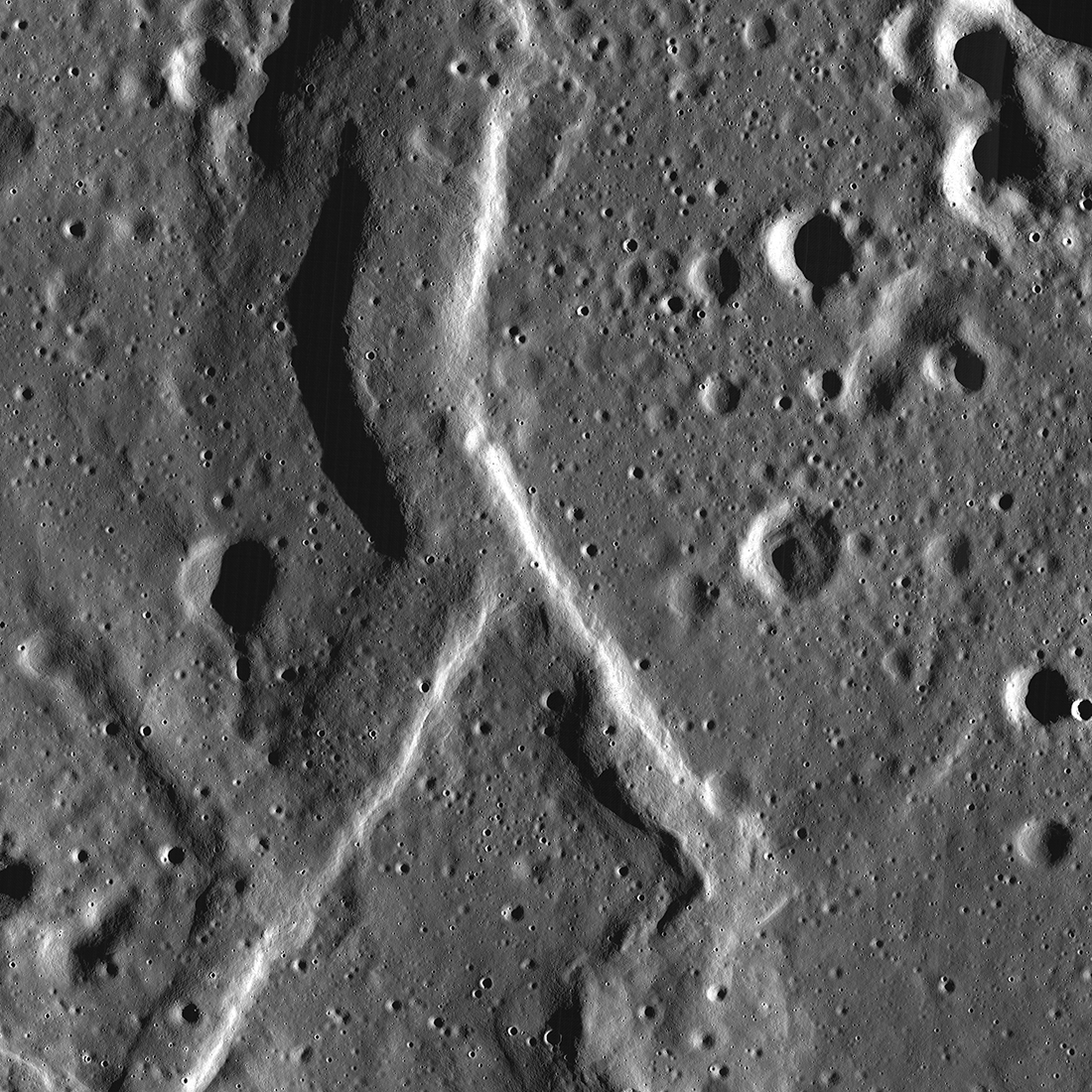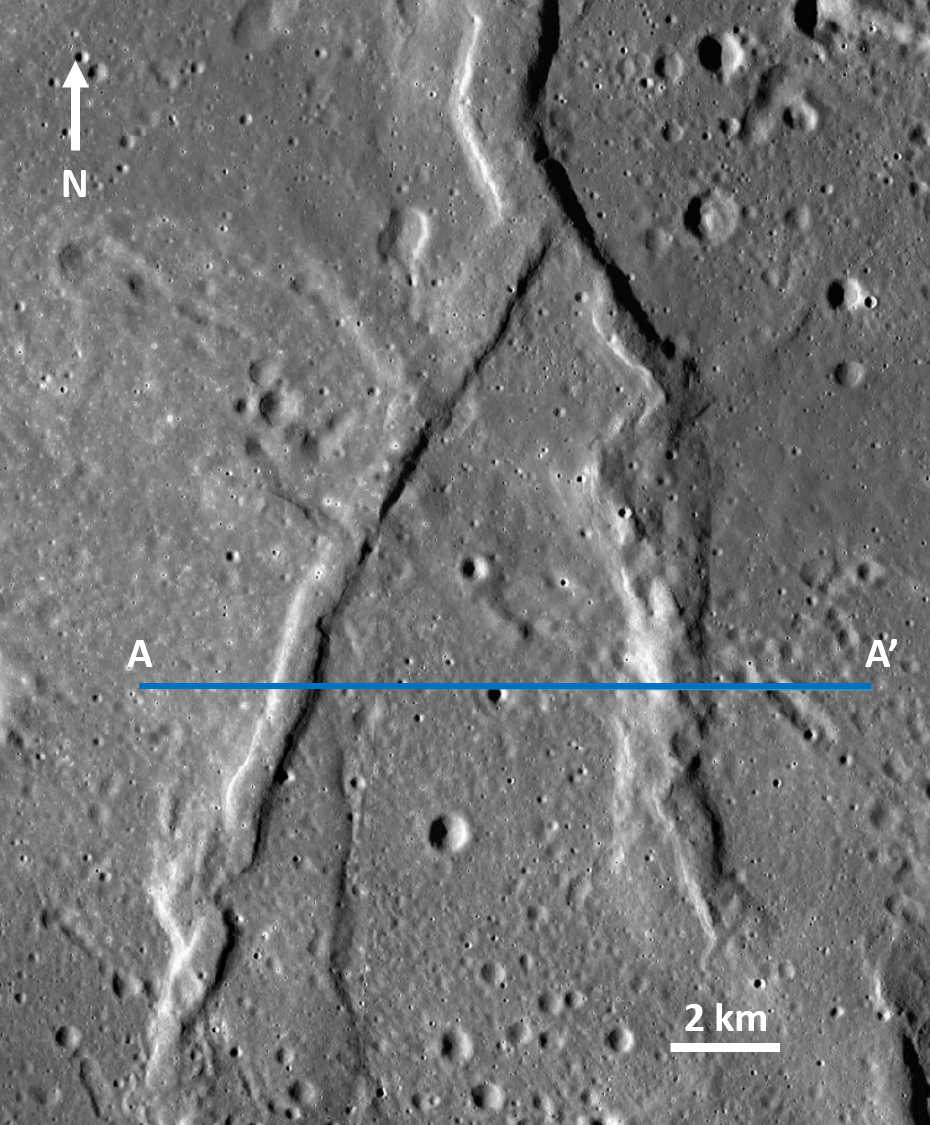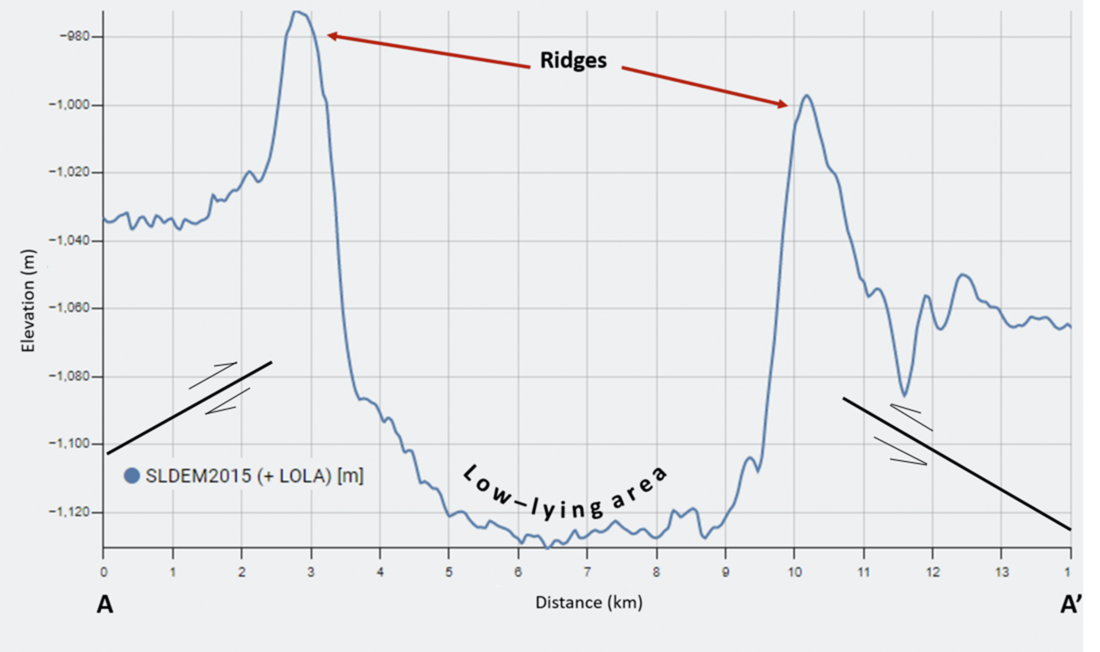
Wrinkle ridges are common compressional landforms on the Moon that occur exclusively in mare basalts. These large ridges mainly formed as a result of contraction from load-induced subsidence after the emplacement of basaltic lavas in the maria – as the dense lavas cooled, their weight caused the terrain to sag, faulting and folding the basalts into wrinkle-like landforms. Wrinkle ridges are characterized by linear topographic highs with complex surface expressions involving a broad arch and a sharp ridge. The faults that created the ridges are thought to extend to depths between hundreds of meters to several kilometers beneath the surface.

This wrinkle ridge, southeast of Copernicus crater, splits into two ridges. Here, these two segments exhibit an uncommonly broad, flat arch without a sharp superimposed ridge. The unusual morphology of the segments indicates how the underlying fault, or multiple faults, offset the underlying basalt layers. The western ridge segment continues to the south, exhibiting a common wrinkle ridge braided morphology. A profile across the two ridges shows that the area immediately south of where they split appears to be a low-lying area (or a basin), likely the result of thrust faults displacing the mare basalts upwards and towards each other, forming a trough-like valley.

Planetary geologists are curious as to why wrinkle ridges on the Moon exhibit a diverse set of surface morphologies. In LROC’s next extended science mission, the wrinkle ridges will be explored in more detail to better understand their formation. Stay tuned for more cool science on lunar tectonics!
For now, inspect these ridges in more detail in he controlled LROC NAC mosaic!
Related Featured Images
Wrinkle Ridges – How Deep Does the Fault Lie
Wrinkle Ridge in Oceanus Procellarum
Published by Brett Denevi on 9 July 2025